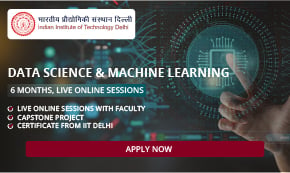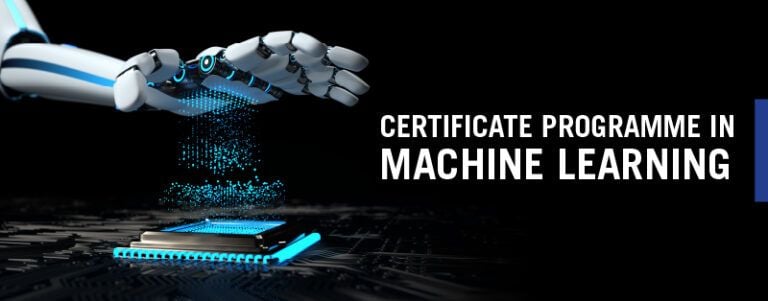Top 10 Data Science Interview Questions with Answers

A Data Scientist job is one of the most in-demand jobs in the market right now. According to IBM, its demand will rise by 200% in 2026 globally. This makes it evident that in this new era of machine learning and big data, data scientists are the trailblazers.
Companies that are successful at data science applications will stand in this economy. Massive data can be used to improve the company’s customer service, product building, and operation analytics. Sources suggest that 35% of companies report they are using AI in their business, marking the growth of the Data Science sector. You can leverage this.
If you are thinking about choosing the path of a data scientist, then you need to be prepared to impress your prospective employers in your data science interview. Here are the top 10 prospective interview questions that you can expect in your interview.
Advanced-Data Science Interview Questions
The most well-known data science interview questions that you can expect based on your technical concepts are-
1. Differences between Unsupervised and Supervised Learning
The difference between supervised and unsupervised learning is a very common question that is asked during your data science interview.
Supervised learning uses the known and the labeled data as input, whereas unsupervised learning uses the unlabelled data as the input. The next difference you can point out is that supervised learning has a feedback mechanism, whereas unsupervised mechanism has none.
To seal this question, the final difference would be mentioning the most commonly used algorithms in both learning methods. For supervised learning, you can mention logistic regression, decision trees, and support vector machines. On the contrary, for unsupervised learning, you can mention hierarchical clustering, k-means clustering, and the Apriori algorithm.
2. Logistic Regression Process
The next question that is asked in a data science interview is the process behind logistic regression. Logistic regression is used to measure the relationship between the dependent variable and one or more independent variables. We do this by estimating the probability with the help of the underlying logistic function.
3. Steps in the making of a Decision Tree
This next question is extremely common in data science interview questions. Your prospective employer might ask you to explain the steps behind the making of a decision tree, and this is how you answer it:
- Use the complete data set as input.
- Calculate the entropy of the target variable and the predictor attributes.
- Calculate information gain of all attributes.
- Select the attribute that has the highest information gain as your root node.
- Repeat this whole process with every branch until your decision node for each is finalized.
4. Steps In Building A Random Forest Model
The steps behind building a random forest model are also one of the common concepts to understand during data science interview preparation. A random forest is made up of a number of decision trees. If you divide the data into different parts and make a decision tree in each of the parts, then the random forest will bring all the decision trees together. The steps behind it are as follows:
- Select ‘k’ features randomly from ‘m’ features, where k<<m.
- Between the k features, calculate node D with the help of the best split point.
- Divide the node into daughter nodes with the help of the best split.
- Repeat the second and third steps until your leaf nodes are finalized.
- Build a random forest by repeating the 1-4th step for ‘n’ times. This will help in creating an ‘n’ number of decision trees in your forest.
5. How Can You Avoid Overfitting Your Model?
Another concept you should focus on during your data science interview preparation is how to avoid overfitting your model. Overfitting is the model that is only set for a small amount of data and ignores the bigger picture. Here are the three main ways you can point out when answering this question:
- Make sure that your model is simple. You can do this by only taking lesser variables into account, and so removing most of the noise in the training data.
- Make use of cross-validation processes such as k folds cross-validation.
- Make use of regularization techniques that will penalize certain model parameters if they’re the likely reason behind overfitting, such as LASSO.
6. Difference between Bivariate, Univariate, and Multivariate Analysis
This question is also one of the concepts that you need to remember during your data science interview preparation.
Univariate data only has one variable. The point of this analysis is to explain a set of data and look for the patterns existing in that data. Bivariate data has two separate variables. This analysis deals with relationships and causes, and its purpose is to find the relationship between the two separate variables. Multivariate data has three or more variables. This set is similar to a bivariate, but it has more than one dependent variable.
7. Feature Selection Methods Used to Select The Correct Variables
When it comes to data science interview coding questions, this is the next concept you should understand. The two main methods that are used for feature selection are filter methods and wrapper methods.
Filter methods include Linear discrimination analysis, ANOVA, and Chi-square. Whereas, Wrapper methods include Forward Selection, Backward Selection, and Recursive Feature Elimination.
8. How To Handle Missing Data Value
A common concept that you need to understand in data science interview coding questions is handling missing data. Suppose your interviewer asks you how you would handle a data set with variables where there are more than 30% missing values.
Your answer should point out ways to deal with this problem in both the case of a large data set and a smaller data set. In the case of a large data set, you can simply remove the rows that have missing data values and use the rest to predict values.
In regard to the small data set, you can use the average or mean of the remaining data in place of the missing values. You can do this by using the pandas’ data frame in Python. The different ways to do this are df.mean(), df.filna(mean).
9. Euclidean Distance in Python
The next concept of data science application you should focus on is the formula to calculate the Euclidean distance in Python. The formula goes as follows:
Euclidean_distance = sqrt((plot 1[0]-plot2[0])**2 + (plot 1[1]-plot2[1])**2)
10. Selecting k for k-means
In this question, you have to mention the Elbow method used for selecting k for the k-means clustering. Within the sum of the squares, it is defined as the aggregate of the squared distance between the centroid and each member of the cluster.
The Bottom Line
These are the most common data science application questions that you might have to face during your interview for the position of a data scientist. So, make sure you understand all of these concepts and frame an answer that mentions all the important points. That way, you are sure to put your best foot forward in the interview. Emeritus India offers various data science programmes from leading global schools and universities.







